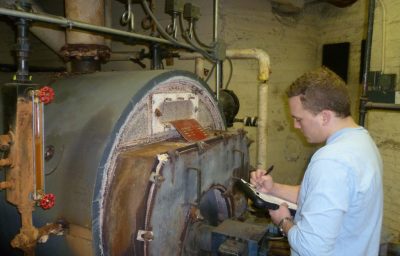
When was the last time your organization reviewed its maintenance policies? Operations and maintenance (O&M) can be easily overlooked when formulating an energy management strategy for your portfolio. O&M may not be as sexy as a lighting retrofit, but it is the first line of defense against energy and water waste. Effective O&M systems are critical to any successful energy management program but, to many, these are foreign terms. Before we go any further, let’s talk about them – separately.
Operations
Operations includes all of the processes needed for an organization to deliver its product. For a business – that means hiring employees, paying them, charging and collecting fees, etc. For a multifamily property – the same processes apply. There are additional concerns, though. The heat needs to work. The water needs to run. Lights need to turn on. Each activity contributes to the property delivering its “product” – safe, comfortable homes.
Maintenance
What is maintenance? Maintenance includes the physical side of operations: making repairs, painting, turning the heat on, turning if off, and replacing filters. Maintenance activities are necessary for keeping the physical components of a property – the roof, the windows, the boiler, the toilets etc. – functioning effectively and efficiently. Each building component requires maintenance to help provide a safe, comfortable home for residents.
Why is O&M Important?
Both facets of O&M are equally important to providing desirable homes. Why is my apartment 80°F in January? Because the boiler is not operating as originally intended. Why do I smell my neighbor’s dinner every night? Because the roof fans were not maintained – and need new belts. These problems are the result of relatively minor oversights from building staff. Systematic O&M processes helps prevent these oversights from slipping through the cracks and compounding each other over time. An effective O&M strategy helps ensure inspections happen when, and how, they should.
Operations & Maintenance are the front lines of energy efficiency. Small changes in operations or maintenance can have significant effects on building performance. Changing a chilled water supply setpoint by 1°F can increase a chiller’s energy usage by 2%.
O&M is not just about eliminating waste. It’s also about providing value. O&M is key to keeping residents comfortable, one of the most important goals at any property. Uncomfortable residents move out, increasing turnover and expenses on the management side. What makes tenants uncomfortable? Does the heating system sound like a drum solo every time it comes on? This is just one minor issue that often affects residents, and management, in a major way. In this scenario, it’s the result of steam traps. Failed steam traps can force steam into the return piping, leading to that nasty banging you hear every time the heat comes on, and plenty of energy waste too! That’s the kind of problem that can be avoided by routine testing and replacement, a standard practice in a sound, strategic O&M plan.
What can you do about it?
Just as small changes in O&M practices can lead to waste – the opposite is also true. Operational changes can also result in significant energy savings. Something as small as changing HVAC setpoints can significantly affect heating and/or cooling energy usage for the better. Regularly scheduled coil cleanings can keep HVAC units running at high efficiency. The key to unlocking these savings is developing an ongoing O&M strategy. Over the last few years Bright Power has helped many organizations do just that. We’ve created new inspection checklists and maintenance schedules to help both property managers and maintenance staff define “effective” operations and maintenance.
It is critical that an organization define which maintenance procedures must be followed at a property. Equally important is how often they should be completed. A clearly defined scope listing maintenance staff responsibilities creates a benchmark against which performance can be evaluated. It can also act as a resource for new hires –showing which inspections and/or repairs need to happen, when they need to happen, and most importantly how to do them. The last part there is the most important. It’s not enough to define which tasks need to be completed – there must be a reference for how to complete each one.
Operations and maintenance are both critical to running an effective property. O&M can also be an effective tool in an energy management strategy. An effective O&M strategy for a portfolio will identify and reduce energy waste, and also keep residents comfortable. When was the last time your organization reviewed its O&M policies? It’s never too late to start.